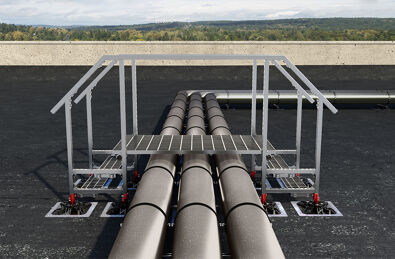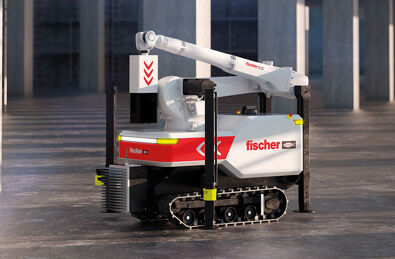Flat roof installations refer in particular to the laying of parts of the building services installation such as air conditioning units, ventilation ducts, pipes or cable systems on flat roofs.
Flat roof installations refer in particular to the laying of parts of the building services installation such as air conditioners, ventilation ducts, pipes or cable systems on flat roofs. The common solutions for laying and fastening installations on the flat roof are concrete or steel base structures, steel supports placed on the roof structure and concrete plates as load distributors.
These common solutions thus influence the roof sealing and thus the protection of the rooms and areas of the building below. Safe installation on flat roofs and protection of the roof seal is only possible with a special flat roof base as a load distributor and flexible attachment point

Your fire damage insurance
Sprinkler systems are highly effective - they detect the fire extremely quickly and start extinguishing measures immediately. The statistics of the BVFA clearly show how effective these extinguishing systems are:
Early extinguishing of incipient fires prevents major damage to people and the environment and keeps material damage to a minimum.
For trade and industry, effective fire protection is vital! If the ability to deliver is jeopardised by business interruptions, this leads to limited competitiveness or even insolvencies.

Installation on the flat roof is primarily dependent on the selected materials for roof sealing and insulation, as this determines the separation layer to be selected and the compressive strength for the possible load-bearing capacity. In addition to the insulation, the load-bearing capacity of the entire roof structure with regard to the absorption of “additional loads” by systems, etc. must be taken into account.




The guarantee for optimal load distribution and reduction of point loads on the flat roof

The fischer PFCN 41 zl push-through connector enables a very simple rail design in combination with FUS rails.

The girder clamp is the optimal fixing solution to steel structures without welding or drilling
In accordance with EN 13162, mineral wool insulation materials may be used as a sealing underlay on roofs with solar systems or other systems if the compressive strength is at least 70 kPa at 10% compression and a load-distributing layer is placed above the insulation. In addition, the continuous compressive strength in accordance with DIN 1606 is also decisive for increased loads on the flat roof.
As an example, on a roof with mineral wool as insulation, a base frame consisting of 2 crossbars and 4 FFRBH flat roof feet can articulately enable a load transfer of up to 2940 kg ~ 3 t. This also depends
on the frame design and the position of the load application on the frame. Taking into account the continuous compressive strength of the insulation material significantly reduces the load-bearing capacity, which is why an accurate calculation is also required taking into account the wind loads.
Learn more about flat roof installation








